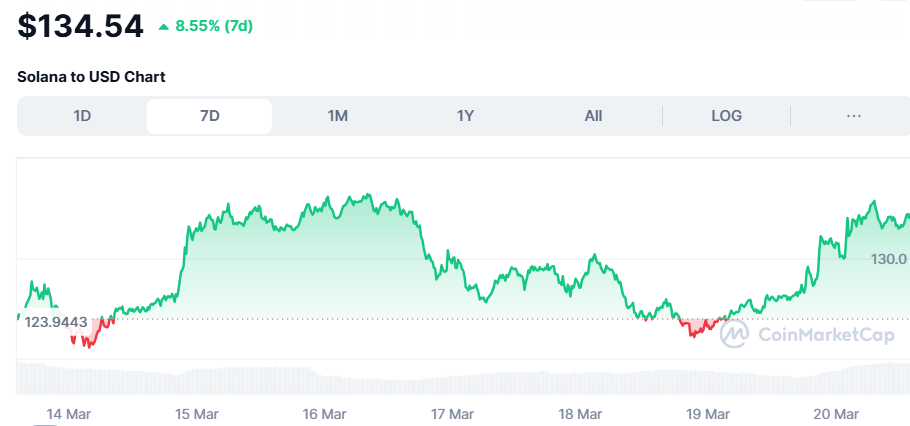As of March 2025, the crypto market continues to shift, and two major platforms — Solana (SOL) and Cardano (ADA)—remain at the center of attention. Both offer strong value in different ways, but they take very different paths when it comes to technology, adoption, and investment potential. This guide compares Solana and Cardano to help you decide which one might suit your goals best.
Understanding the Technology
Solana: Speed and Scalability at the Core

Solana uses a unique mix of Proof-of-History (PoH) and Proof-of-Stake (PoS), which allows it to handle thousands of transactions per second. It’s built for performance and can scale easily as demand grows. Solana supports languages like Rust and C, making it a flexible option for a wide range of developers.
Cardano: Security and Research-First Development
Cardano runs entirely on a PoS system called Ouroboros, which focuses on energy efficiency and network security. Its current transaction speed sits in the hundreds per second, but new upgrades aim to push that higher. Developers use Haskell to write smart contracts, which helps ensure code accuracy and reliability.
Network Health and Decentralization
Solana’s Approach
Solana runs with about 1,000 validators. This setup helps maintain fast speeds, but it has sparked concerns about whether the network is truly decentralized. The network has also faced outages in the past, though recent improvements have helped reduce these issues. Still, downtime remains something to watch.
Cardano’s Strength in Stability
Cardano runs with more than 3,000 validators, which supports decentralization and strong network health. It has a consistent record of uptime, with few performance issues. Its careful upgrade process helps maintain reliability, earning trust from both developers and investors.
Adoption and Market Position
Solana’s Momentum
Solana’s market cap is about $68 billion as of March 20, 2025, placing it among the top five cryptocurrencies. Interest from institutions is growing, especially with the possibility of a Solana-based ETF on the horizon. The network continues to grow its footprint in DeFi and NFTs, attracting new projects regularly.
Cardano’s Steady Growth

Cardano holds a market cap of around $25.7 billion. While smaller than Solana’s, it shows consistent investor support. Former President Donald Trump even suggested including Cardano in a national crypto reserve, boosting its credibility. Cardano’s DeFi space continues to grow as it competes with Ethereum and Solana in the smart contract arena.
Recent Price Trends
Solana (SOL):

From: Coin Market Cap
After Trump’s March 2 announcement about Solana’s potential inclusion in a national crypto reserve, SOL jumped to about $180. However, the price later corrected and settled near $134 by March 20. Solana remains highly responsive to news and market trends, which can create opportunities for short-term traders but also carries more risk.
Cardano (ADA):

From: Coin Market Cap
Cardano’s Price Rally
Cardano’s price surged by 80 percent between March 2 and 3, peaking near $1. It later stabilized around $0.7312. While ADA also reacts to major news, it generally experiences less dramatic swings than Solana. Its strong community and long-term vision help keep the price relatively stable.
These shifts show how sensitive crypto markets are to announcements and investor sentiment.
Future Development and Upgrades
Solana’s Plans for Growth
Solana is working on new Layer-2 solutions to improve scalability and ease network pressure. It is also expanding cross-chain compatibility, which will make it easier to work with other blockchains. Future updates will focus on security and avoiding the outages seen in previous years.
Cardano’s Research-Based Strategy
Cardano’s Hydra upgrade will significantly increase transaction speeds, making the network more competitive. At the same time, the team continues building partnerships in developing regions to drive adoption. Unlike Solana’s fast-paced growth, Cardano’s development follows a careful, research-first model that favors stability.
What Kind of Investor Should Choose Solana?
- Traders who want speed will benefit from Solana’s high throughput and low fees.
- Developers building dApps may appreciate its language flexibility and growing ecosystem.
- Short-term investors might take advantage of price swings, though they must accept higher risk.
What Kind of Investor Should Choose Cardano?
- Long-term investors may prefer Cardano’s focus on decentralization and sustainability.
- Those interested in staking can participate in validating the network and earn rewards through its PoS system.
- Risk-averse investors might feel more comfortable with Cardano’s slower, more stable approach.
Solana or Cardano: Which Is the Better Bet?
It really comes down to your investment goals. Solana offers speed, rapid growth, and big potential rewards, especially for short-term gains. But its history of outages and high volatility may be too risky for some.
Cardano, by contrast, offers long-term security, strong decentralization, and a development roadmap rooted in academic research. It may not grow as fast, but its foundation is built for sustainability.
Both platforms bring unique value to the crypto space. If you’re unsure which to choose, spreading your investment across both might give you a balance of growth potential and stability.
Important Note: Cryptocurrencies involve real risks. This content is meant for information only and should not be seen as financial advice.






